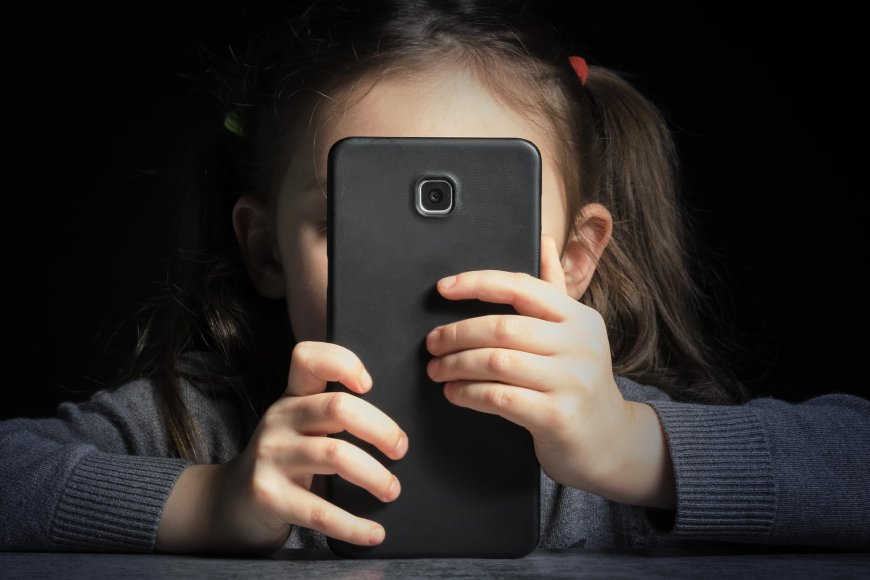The Challenges of Regulating the Sometimes-Nasty Business of Child Influencers

Illinois Governor Signs Law Regulating Social Media Use by Children

Illinois Governor J.B. Pritzker signed a new measure into law last August, making it the first of its kind in the state. The law was passed by both houses of the state’s legislature, with unanimous support in the Senate.
Breaking the Rules
Most social media platforms have an age restriction of 13 years and above. However, some parents find ways to bypass this rule.
One example is Ryan Kaji, a YouTube star with nearly 37 million subscribers. His parents created a channel called “Ryan’s World” when he was just 6 years old. Now at the age of 12, his toy-testing videos have become a massive hit. According to Vanguard news, he is ranked as the fourth richest YouTuber with an estimated net worth of $100 million.
These videos featuring child influencers can be highly profitable.
Anthony Palomba, an expert in media and entertainment at the Darden School of Business, explains the phenomenon.
“We have seen a generation of millennial and Gen X parents who have become accustomed to filming their children and monetizing it. And why not? It’s incredibly easy to do,” he said. “There are no production costs involved, and the risks are minimal. If nobody enjoys watching your baby spill spaghetti on their head while you clean it up with Clorox wipes, that’s fine. It didn’t work.”
Although the new Illinois law lacks government enforcement, Elizabeth Cahn, a legal expert, emphasizes the importance of strengthening child labor laws in general. She has also written about this need in her research.
“Nevertheless, this law sends a clear message that the exploitation of children in this manner is not acceptable,” she said. “It brings much-needed attention to this issue and serves as an excellent example of civic engagement. It was a high school student who recognized the need for regulation.”
According to Cahn, the law is long overdue and further protections are necessary. One area to consider is privacy concerns.
“Future legislation may allow children to have their earlier videos or social media content removed from platforms. Once something is posted on social media, it can be seen by anyone indefinitely,” she explained.
SDGs, Targets, and Indicators
| SDGs | Targets | Indicators |
|---|---|---|
| SDG 8: Decent Work and Economic Growth | Target 8.7: Take immediate and effective measures to eradicate forced labor, end modern slavery and human trafficking, and secure the prohibition and elimination of the worst forms of child labor | No specific indicators mentioned in the article |
| SDG 4: Quality Education | Target 4.7: By 2030, ensure that all learners acquire the knowledge and skills needed to promote sustainable development, including, among others, through education for sustainable development and sustainable lifestyles, human rights, gender equality, promotion of a culture of peace and non-violence, global citizenship, and appreciation of cultural diversity and of culture’s contribution to sustainable development | No specific indicators mentioned in the article |
| SDG 16: Peace, Justice, and Strong Institutions | Target 16.2: End abuse, exploitation, trafficking, and all forms of violence against and torture of children | No specific indicators mentioned in the article |
1. Which SDGs are addressed or connected to the issues highlighted in the article?
- SDG 8: Decent Work and Economic Growth
- SDG 4: Quality Education
- SDG 16: Peace, Justice, and Strong Institutions
Explanation:
The article discusses the exploitation of children on social media platforms, which is connected to the issues addressed by SDG 8 (Decent Work and Economic Growth) as it involves child labor and the need to eradicate forced labor and the worst forms of child labor. It is also connected to SDG 4 (Quality Education) as it raises concerns about the impact of such exploitation on children’s education and well-being. Additionally, it relates to SDG 16 (Peace, Justice, and Strong Institutions) as it highlights the need to end abuse, exploitation, and trafficking of children.
2. What specific targets under those SDGs can be identified based on the article’s content?
- Target 8.7: Take immediate and effective measures to eradicate forced labor, end modern slavery and human trafficking, and secure the prohibition and elimination of the worst forms of child labor
- Target 4.7: By 2030, ensure that all learners acquire the knowledge and skills needed to promote sustainable development, including, among others, through education for sustainable development and sustainable lifestyles, human rights, gender equality, promotion of a culture of peace and non-violence, global citizenship, and appreciation of cultural diversity and of culture’s contribution to sustainable development
- Target 16.2: End abuse, exploitation, trafficking, and all forms of violence against and torture of children
Explanation:
The article highlights the need to take measures to eradicate forced labor, end modern slavery, and eliminate the worst forms of child labor, which aligns with Target 8.7 under SDG 8 (Decent Work and Economic Growth). It also emphasizes the importance of ensuring that all learners acquire the knowledge and skills needed to promote sustainable development, including education for sustainable development and human rights, which relates to Target 4.7 under SDG 4 (Quality Education). Furthermore, it addresses the need to end abuse, exploitation, trafficking, and violence against children, which corresponds to Target 16.2 under SDG 16 (Peace, Justice, and Strong Institutions).
3. Are there any indicators mentioned or implied in the article that can be used to measure progress towards the identified targets?
No specific indicators are mentioned or implied in the article that can be used to measure progress towards the identified targets.
4. SDGs, Targets, and Indicators
| SDGs | Targets | Indicators |
|---|---|---|
| SDG 8: Decent Work and Economic Growth | Target 8.7: Take immediate and effective measures to eradicate forced labor, end modern slavery and human trafficking, and secure the prohibition and elimination of the worst forms of child labor | No specific indicators mentioned in the article |
| SDG 4: Quality Education | Target 4.7: By 2030, ensure that all learners acquire the knowledge and skills needed to promote sustainable development, including, among others, through education for sustainable development and sustainable lifestyles, human rights, gender equality, promotion of a culture of peace and non-violence, global citizenship, and appreciation of cultural diversity and of culture’s contribution to sustainable development | No specific indicators mentioned in the article |
| SDG 16: Peace, Justice, and Strong Institutions | Target 16.2: End abuse, exploitation, trafficking, and all forms of violence against and torture of children | No specific indicators mentioned in the article |
Source: news.virginia.edu








